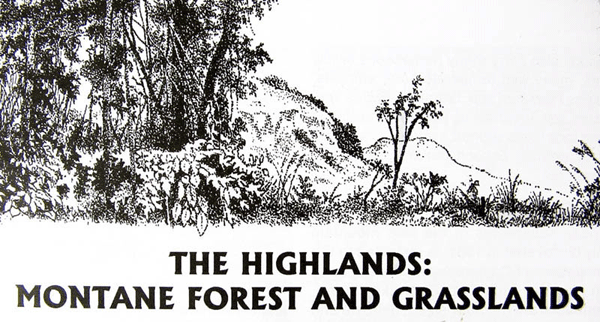
Highlands
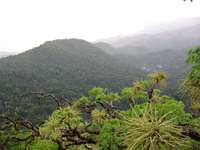
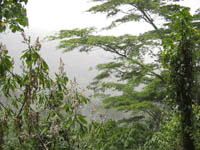
The glory of Gashaka-Gumti lies is in its mountains, mountains which are cloaked in spectacular forests and often blanketed in swirling mist. These mountains include Gangirwal (Chappal Waddi), Nigeria's highest peak, an awe-inspiring 2,400 metres above sea level. At such high altitudes the climate is cool and temperate, providing perfect conditions for activities such as trekking or horse-riding.
Mountains worldwide have traditionally provided us with spiritual refreshment, restoring peace and serenity to countless travellers since time. After days of hot imprisonment in your vehicle you are urged to recuperate by visiting the highlands of the park. Breathe fresh, high mountain air, smell the flowers and herbs as you walk along winding scenic footpaths, enjoy the sounds and silence of the wilderness.
Highlands within the park contain two distinctive habitat types: montane forest restricted to fringes along streams, valleys and steep slopes; and montane grassland which occurs everywhere in between.
Montane Forest
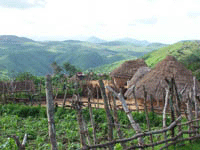
This forest occurs above a minimum height of 1,650 metres and is very different from lowland forest. The high humidity levels and lower temperatures mean that for much of the year these forests are permanently shrouded in mist. An alternative, perhaps more appropriate name for such forests, that of "mist forest", naturally developed from such characteristic conditions.
The trees that go together to make up a montane forest are generally shorter than those of forests at lower altitudes, perhaps only as high as 15-25 metres. The canopy of the montane forest is rarely closed, allowing light to penetrate to ground level sufficient to support a lush low vegetation rich in herbs and shrubs in which the tree fern Cyathea manniana is the most noteworthy. Tree species are numerous yet the tallest trees are often stranglers: Ficus and other species of fig are common, together with Schefflera abyssinica, whilst the huge crowns of Albizia gummifera are conspicuous.
Tree trunks are covered with a profusion of epiphytic plants such as orchids, lichens, ferns and, most obviously, large mosses; but climbing plants (lianas) are far less evident here than in lowland forest and are mostly confined to the forest edge.
Why are Montane Forests Important?
Montane forests are one of the most highly endangered of all African habitats. The park's montane forests function as important watersheds for many of the region's larger rivers. In addition they contain specialised life-forms which have been largely destroyed elsewhere by conversion of such forests to farmland or grassland. Although the large mammals, which inhabit montane forests, are similar to those found at lower altitudes (chimpanzees, yellow-backed duiker, bushpigs etc.) a number of butterflies, small mammals, and birds are found here and nowhere else in Nigeria.
Montane Grassland
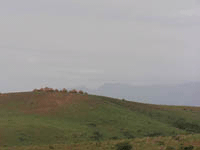
This is a distinctive man-made habitat maintained in part by the effects of grazing and fire. Grasses tend to grow in tussocks for the most part and seldom exceed 0.6 metres in height. These grasslands also carry many herbaceous or low shrubby plants, many with temperate zone affinities, such as brackens ( Pteridium spp.), brambles ( Rubus spp.), and everlasting plants ( Helichrysum spp.) Grasslands and intervening rock faces support a variety of animals including buffalo, warthog, baboon, Mountain reedbuck, klipspringer and oribi.
